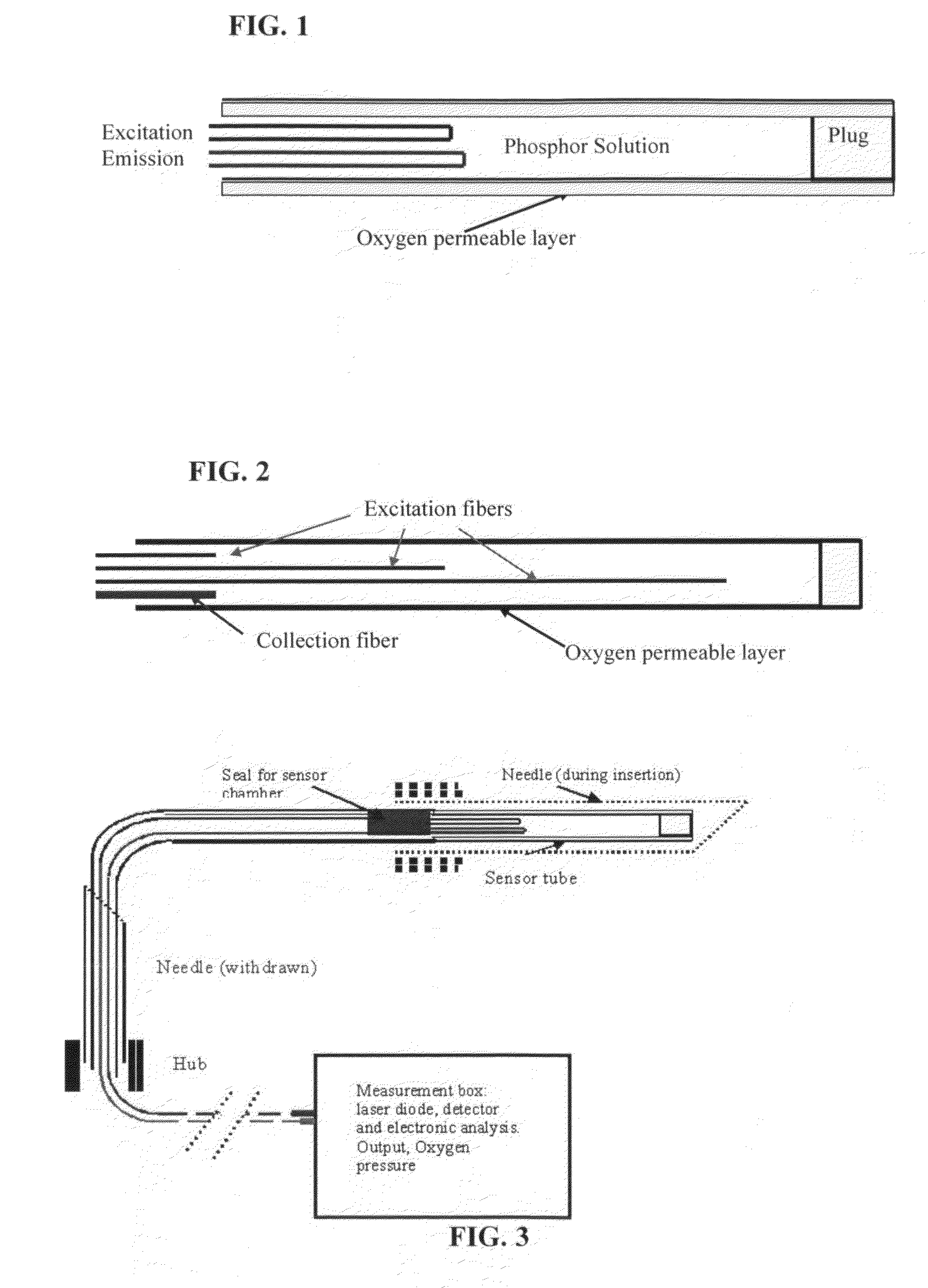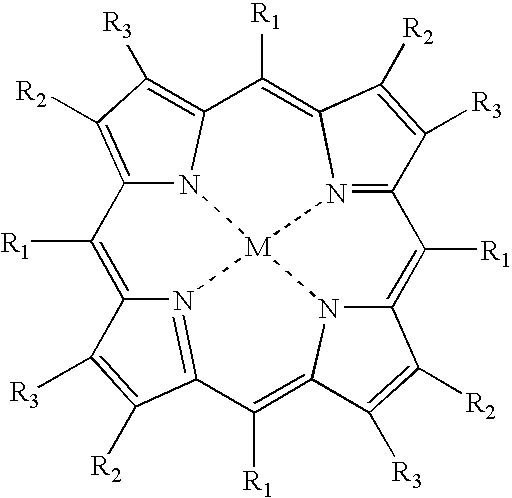Oxygen Sensor for Internal Monitoring of Tissue Oxygen in Vivo
a tissue oxygen and oxygen sensor technology, applied in the field of improvement, can solve the problems of affecting the life of patients, affecting the quality of life of patients, affecting the quality of life of patients,
- Summary
- Abstract
- Description
- Claims
- Application Information
AI Technical Summary
Benefits of technology
Problems solved by technology
Method used
Image
Examples
example 1
Monitoring of an Ischemic Bowel
[0094]Pediatric and adult patients can develop conditions, such as volvulus, necrotizing enterocolitis and strangulation of the intestine due to an adhesion. These cause regional ischemia of the intestine requiring an exploratory laparotomy and possible resection. Often there are areas of the intestine that are transition zones with potential viability. To help preserve as much of the intestine as possible a second (or third) surgical look may be required to assess these areas. Further, there is no way to judge the outcome of therapies to improve intestinal viability until it is reassessed visually. Computerized tomography is of limited use and usually cannot distinguish viable from non-viable tissue, except at the irreversible extreme. Plain X-rays are also only useful at the extreme, when perforation has occurred due to tissue necrosis.
[0095]Solution using present invention: Following the initial laparotomy, the surgeon can, in accordance with the pr...
example 2
Monitoring of a Muscle Flap
[0096]As part of restorative surgery to fill in a space created by re-section of diseased tissue or loss from trauma, surgeons often mobilize muscle from one area and transfer it to another. This muscle may still have its native vascular supply intact, or it may be completely disconnected, in which case it is reattached to another vascular supply (free flap). Such surgery is often complicated by flap failure due to an inadequate vascular supply, and unfortunately, it is often difficult to monitor the integrity of the flap because it is subcutaneous. Doppler ultrasound may be used, but it can only determine whether a pulse can be detected in or near the tissue.
[0097]Solution using the present invention: An oximeter catheter of the present invention could be inserted along the body of the flap or inserted into the body of the muscle, and the integrity of the muscle can then be monitored at various points on the flap while in situ. This could be easily remove...
example 3
Monitoring Cardiopulmonary Resuscitation
[0098]The American Heart Association has established guidelines for providing cardiopulmonary resuscitation (CPR) to victims of cardiac or respiratory arrest. One of the difficulties in providing this potentially life saving care, is the inability to monitor in real time, the adequacy of chest compressions and the delivery of oxygen into the tissues of the patient. In an intensive care unit a patient may have an arterial line already established, permitting medical practitioners to periodically sample the patient's blood to monitor progress. However, before the patient reaches the ICU, arterial lines are not used because they take time and expertise to establish, making them impractical to use in an acute situation. As a result critical measurements of tissue oxygen are not possible.
[0099]Solution using the present invention: At initiation of CPR, one could insert the oximeter catheter into a deltoid, masseter or other muscle as a surrogate fo...
PUM
 Login to View More
Login to View More Abstract
Description
Claims
Application Information
 Login to View More
Login to View More - R&D
- Intellectual Property
- Life Sciences
- Materials
- Tech Scout
- Unparalleled Data Quality
- Higher Quality Content
- 60% Fewer Hallucinations
Browse by: Latest US Patents, China's latest patents, Technical Efficacy Thesaurus, Application Domain, Technology Topic, Popular Technical Reports.
© 2025 PatSnap. All rights reserved.Legal|Privacy policy|Modern Slavery Act Transparency Statement|Sitemap|About US| Contact US: help@patsnap.com



